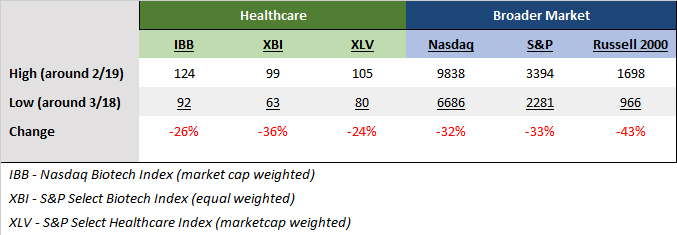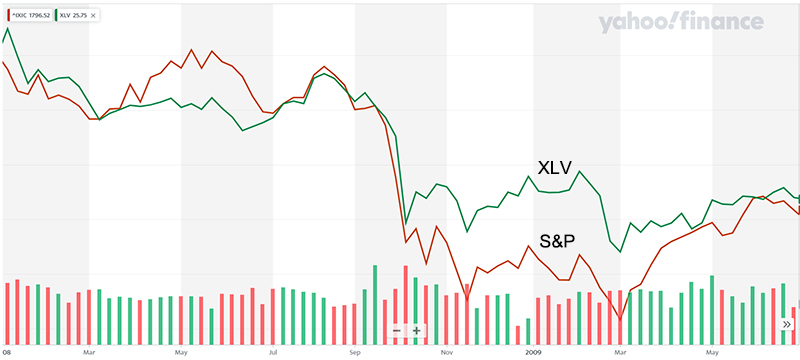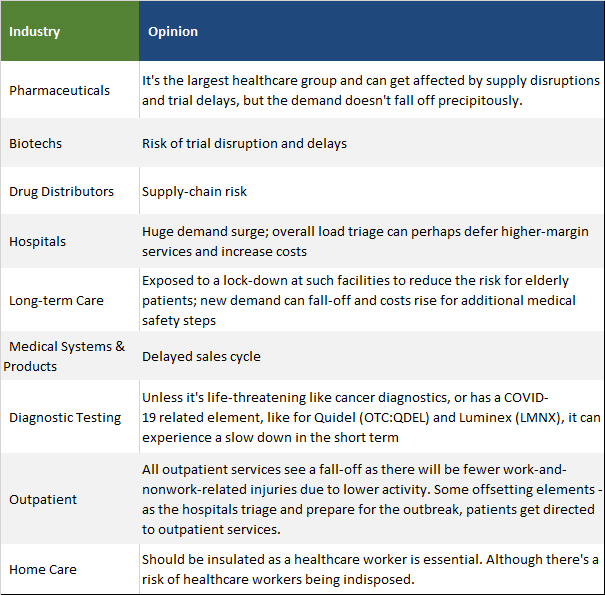My Journey with Cassava
I acquired a position in Cassava Sciences (SAVA) in March 2020 because of its approach towards misfolded proteins in tackling Alzheimer's disease. I was thus quite disappointed to learn in May 2020 that the mechanism of action did not result in meeting the primary endpoint in the Phase 2b trial, and perplexed by the press release which struggled to communicate the reasons behind the missed outcome.
It was clear that management at that point was having a hard time offering a reasonable explanation to the contradictions and high variability in the biomarker results. Nonetheless, the endpoint was missed, and there was not much to be done but sell the position in my family account at a loss. A few months later in Sep 2020, Cassava announced a revised analysis with a compelling explanation. Towards the end of last year, I was again back on the horse and acquired a position in this highly speculative microcap at that point. This was all done in my family account and not in my account to avoid reporting requirements here and to not convey confusing signals to the model portfolio subscribers.
I covered Cassava Sciences in an earlier article on 3 Neurology stocks for Alzheimer's Disease.
I acquired a position in Cassava Sciences (SAVA) in March 2020 because of its approach towards misfolded proteins in tackling Alzheimer's disease. I was thus quite disappointed to learn in May 2020 that the mechanism of action did not result in meeting the primary endpoint in the Phase 2b trial, and perplexed by the press release which struggled to communicate the reasons behind the missed outcome.
It was clear that management at that point was having a hard time offering a reasonable explanation to the contradictions and high variability in the biomarker results. Nonetheless, the endpoint was missed, and there was not much to be done but sell the position in my family account at a loss. A few months later in Sep 2020, Cassava announced a revised analysis with a compelling explanation. Towards the end of last year, I was again back on the horse and acquired a position in this highly speculative microcap at that point. This was all done in my family account and not in my account to avoid reporting requirements here and to not convey confusing signals to the model portfolio subscribers.
I covered Cassava Sciences in an earlier article on 3 Neurology stocks for Alzheimer's Disease.
Spending Momentum In A Defensive Sector
The issues raised in the Citizen's Petition and new ones unearthed as a result have cast a shadow on Cassava. At this time, one only has the safety profile of the drug and the biomarker data from Phase 2b in determining the potential promise of the drug. And no allegations, aspersions, and discrepancies have thus far been directly relevant and sufficiently concrete to erode the basis of Simufilam's unique mechanism of action and its biomarker data. Consequently, at this time Simufilam remains to me an attractive and one of the leading candidates in the quest for an Alzheimer's treatment.
I came close to selling a portion of my family position a few times in the gush of chilling allegations pointing at fraud. But I just could not pull the trigger. Perhaps it was partly because I did not wish to lose this intriguing position again. But importantly, this was not a clear-cut decision as no new trial data was released. The petition was questioning Phase 2b data, and even though the fraud allegations were sinister, the Company's side had to be heard as well. With each passing day after the initial assault from the petition, the mess appeared to be getting stickier with respectable third parties questioning the data.
To me, nothing alleged thus far crosses into the red zone that can halt the beginning of Phase 3, which is the next milestone. So I have just continued to add to my family account in little amounts and the experience has been difficult, for it seems there have been times when I could buy the shares much cheaper the next day. The stock indeed became riskier after the petition, and in our quantitatively-driven Prudent Biotech model portfolio we closed the position last month. The Prudent Biotech portfolio as of Sep 1 was up +86% for 2021, compared to the Nasdaq Biotech Index (IBB) gain of 14%, and the S&P Biotech Index (XBI) loss of -6%.
I believe that the first patient enrollment should be announced over the next four weeks, and possibly earlier, and that should be a milestone. Either that or the FDA's closing response to the citizen's request will de-fang the petition and close some other frivolous arguments as well.
Issue of Semantics
There have certainly been a few legitimate concerns raised, which have elevated the risk. However, some of these have been around semantics. Cassava's choice of words has generated an intense reaction, some of it justified, while much of it just an overreaction.
Quanterix
The use of the word "generated," by the Company in defining the role of third-party vendor Quanterix was blown out of proportion. Perhaps, Cassava should have worded the sentence more precisely, as its language was potentially misconstrued to suggest the raw data obtained from Quanterix was presented in that form at the Alzheimer's conference.
Cassava Sciences’ plasma p-tau data from Alzheimer’s patients was generated by Quanterix Corp., an independent company, and [an analysis of that data was] presented at the recent Alzheimer’s Association International Conference." Cassava's press release (bold typeface is mine to show how clarity could have been added)
Thus, Quanterix's subsequent press release was triggered to clarify it didn't do the analysis, which became a smoking gun issue initially, causing substantial valuation damage and requiring further clarification from Cassava. It is an industry practice to separate data generation from data analysis, and Quanterix did generate the raw sample data, including the p-tau data. At worst, Cassava was guilty of an imprecise statement and nothing more.
Audio Commentary
The next time around semantics became an issue was when Cassava Sciences did an investor hand-holding session in its audio recording. I winced when the defense started with, "I think these allegations are false." This statement didn't have the resonance of unequivocal rejection of the claims. But I understood why it was said. The two issues that were being addressed by the Company were the authenticity of the analysis and science that Cassava is pursuing, and the issue of blot discrepancies in articles published by Dr. Hoau-Yan Wang, an Associate Professor at City University of New York (CUNY), who is also a scientific advisor to Cassava.
Cassava was categorical about the analysis, as it should be since it controls that part. However, the blot issue is something that the Company has turned towards CUNY to resolve, and pending the University's inquiry, the Company cannot be categorical about it. Thus, the use of the words, "I think." At worst, this was just an in-artful way of beginning a rebuttal, and nothing to do with doubts about the science or trial results.
Outside Lab
An issue cited in the petition was that the biomarker data was not done by an outside lab in the redo of Phase 2b. Here is an excerpt from Cassava's annual 10-K filing for 2020:
In May 2020, we announced that an outside lab with whom we had no prior work experience had generated an initial bioanalysis of CSF samples from our Phase 2b study...With its validity in question, the initial bioanalysis serves no useful purpose. Backup CSF samples were subsequently sent to a second outside lab for bioanalysis. All bioanalyses were conducted under blinded conditions to eliminate any possibility of bias." (emphasis is mine)
The allegation was that this was not an outside lab, but the lab of Dr. Wang, who has an approximately 15-year history of collaborating with Cassava Sciences, has co-authored papers with Dr. Lindsay Burns, SVP of Neuroscience at Cassava, and is also on the Company's Scientific Advisory board. Thus, Dr. Wang's lab could not be termed as an outside lab. Again an issue of semantics on what can be considered an outside lab. There is no regulatory requirement that such bioanalysis must be performed by an outside lab and no definition of what constitutes an outside lab.
Let us accept that the bioanalysis was performed at CUNY, and Cassava should have added that detail in the reference to the outside lab.
Does adding the detail change anything?
Likely not, unless the petitioners can provide evidence that the bioanalysis was NOT conducted under blinded conditions, as the Company emphasized. If it's blinded, how does one change the data for the right groups - drug vs placebo? Many biotechs and pharmas do such an analysis in-house or with affiliated sites, but ensuring that the data is blinded. If indeed the CUNY lab was used, then Cassava has not violated an industry norm or regulation. Presently, it appears that this omission is being used to suggest that data manipulation occurred, while not providing any direct evidence of it.
After being hurt the first time around by working with a lab that didn't possess the requisite expertise, wouldn't it be prudent for Cassava to work the second time around with one that has demonstrated the expertise to do such bioanalysis of the CSF samples? Shareholders paid the price during the valuation meltdown that followed after the incorrect first analysis in May 2020.
For those still worrying about the Phase 2b original and redo, some measure of comfort should be acquired from the fact that the FDA was presented this data in the End-of-Phase-2 meeting (EoP2). One should not mislead themselves into believing that EoP2 is just a benign acceptance of whatever report the company submits without any inquiry or discussion of the process and findings by the FDA to inform the path forward.
The purpose of an EOP2A meeting is to facilitate interaction between FDA and sponsors who seek guidance related to clinical trial design employing clinical trial simulation and quantitative modeling of prior knowledge (e.g., drug, placebo group responses, disease), designing trials for better dose response estimation and dose selection, and other related issues." FDA Guidance (emphasis is mine)
If the FDA accepted the analysis of the Phase 2b redo in facilitating the planning for Phase 3, then the issue of the original but incorrect analysis of Phase 2b data is moot. Incidentally, notable FDA attendees at the EoP2 meeting included, Robert Temple, MD, Deputy Center Director for Clinical Science and Senior Advisor in the Office of New Drugs; Billy Dunn, MD, Director, Office of Neuroscience; Eric Bastings, MD, Director, Division of Neurology, amongst others. One can safely consider these folks to be more seasoned than most in evaluating Phase 2 and providing directions for Phase 3.
Issue of Blotters
The controversy over Western blotting involved papers that were published by Dr. Wang and also co-authored by others including Dr. Burns. Three of the four papers are cited on Cassava's website.
The controversy gained more momentum when a well-respected expert in identifying errors in medical datasets and images, Dr. Elisabeth Bik, agreed with the petitioners on errors in images, including some that looked similar, had inconsistent band counts, and had halo effect when none should have existed. Dr. Bik also found other errors in these papers regarding some images that were too similar for tissue panels exposed to different treatments. She also found five other papers from Dr. Wang with similar image concerns.
In all such instances, Dr. Bik noted that there could be another explanation.
The blots are compressed and of relative low resolution, so I hope the authors can respond by showing the high-resolution scans to take away any concerns. (Dr. Bik on image differences)
...Please note that I am not suggesting here that moving this data point from the treatment group to the placebo group was done on purpose. Mistakes can happen, in particular if there is a rush to publish, and I do not know exactly what has happened here. (Dr. Bik on data differences)
The controversy over Western blotting stuck as the discrepancies mentioned were easily visible to the naked eye. However, these digital artifacts can be distorted due to compression and lower resolution, and perhaps a magnification of some of the images could show differences where Dr. Bik found only similarities. One such analysis was presented by Kejin Huang, an investor and a computer graphics engineer (an informed guess).
In the rebuttal, Cassava Sciences clarified that image issues can be a result of compression and resolution, and urged CUNY to investigate further. The Company also commented on data concerns, and this is discussed in the next section.
The blotting controversy is an issue that will remain pending till the CUNY investigation is complete.Mistakes Acknowledged
The resulting spotlight from the petition has allowed diligent folks to uncover errors in the slides presented by Cassava Sciences. If the slide discrepancies had turned out to be true, then they would have been the closest, tangible evidence of data manipulation with the same data being shown to convey different results.
However, the Company clarified in its audio commentary that indeed there were mistakes in a 2017 article in a journal and in a poster on SavaDx presented in July 2021. The Company emphasized that these were visual errors and the data analysis remains accurate. Note that the recent poster was for SavaDx, the Alzheimer's disease diagnostic test, and not for Simufilam, the drug treatment. It was an irrelevant error soaking up investor attention, for in reality, SavaDx is not the key driver of Cassava's valuation but it is Simufilam. In any case, the data chart issues were addressed.
As a result of the controversy, Cassava Sciences in a recent conference committed to a complete accounting of the data custody chain for its 12-month data expected to be released next month. However, in our opinion, this may come with a potential twist for the company. Note that the 12-month data has never been shown to have cognitive improvement in any treatment. If the 12-month data does not show cognitive improvement, it can be twisted to create a controversy that it was because the third party did an honest analysis. However, if the data does show some improvement or a slower decline then it becomes a highly promising event for Cassava.Fear, Uncertainty, and Doubt
One knows a story has gotten away from facts when people, who should know better, don't care about being wrong.
Here's an example.
On the morning of Friday, Sep 3, Cassava Sciences released an audio recording and its transcript. The company's CEO noted,
For the record, we are not on clinical hold, nor has FDA contacted us regarding the Citizen’s Petition or any allegations. In fact, we recently reached agreement with FDA for two Special Protocol Assessments for our Phase 3 program. (emphasis is mine)
The same morning there was a tweet sent out by a biotech influencer after reading the rebuttal:Either the company or the tweeter is not telling the truth about the FDA's "ongoing investigation."
The FDA did not have an ongoing investigation that morning as the Company had explicitly confirmed. Neither was there an SEC investigation at that point, which the Company would have disclosed. And no reference to an ongoing CUNY investigation can be found on the university website. It was Cassava that disclosed it has requested CUNY to investigate, but that's not what one would understand from the tweet.
This is nothing to say that an FDA or SEC investigation may not occur in the future. But at that moment, the tweet was served to incite FUD in investors who may have reacted to it. I learned of the tweet because it was picked up in a financial media article.Management Steps
We believe the company can engage in confidence-building measures that can boost the valuation while continuing its laser focus on the Phase 3 rollout.
It is in Cassava's interest to publish sufficient data to allow replication of these results by interested parties, particularly as the binding of Simufilam, its small molecule, to Filamin-A, a scaffolding protein, is a more novel approach. If Cassava has additional data or access to images, it must release them to lay this issue to rest and to strengthen the scientific integrity and uniqueness of its approach.
There has been no insider buying since the controversy erupted. Management and the Board of Directors must consider purchasing shares, as regulations permit, and provide the much-needed vote of confidence. Insiders bought after the revised Phase 2b results were announced in 2020, and insiders must buy now to mitigate the elevated risk as a result of the controversies.The cash incentive plan for management is tied to market capitalization. The awards start accruing based on 15 valuation milestone tiers between $200 million and $5 billion. At the upper limit of a $5 billion market cap for 20 consecutive days, the cash payout can be in the range of $137 million to $322 million. All earned bonus awards are due immediately in the event of an acquisition. Otherwise, these earned bonuses are paid based on the Compensation Committee's evaluation of the Company's ability to pay. This is the $300 million compensation issue that has been brought up in the swirl of allegations, even though it has nothing to do with the blotters and biomarkers. Management and the Board of Directors should make incentives more aligned with Phase 3 success and with shareholders' interests in the form of shares and not cash or trigger such cash awards only in the event of an acquisition. It also gives greater credence to the mission of serving the Alzheimer's population by aligning a generous payout with Phase 3 success. Otherwise, for an emerging biotech with a promising but still an investigational pipeline, the sums are disproportional and invite scrutiny.
What's Next?
I believe the next 4 weeks can witness more activity by the petitioners. For in these weeks, the patient recruitment should open and we are likely to hear of the first enrollment in the Phase 3 trial. It can happen even earlier. It is even less likely for the FDA to suspend an ongoing trial for any reason other than safety. By allowing the enrollment, the FDA would indirectly speak to the petition even if it has not yet responded formally by that time. The agency has 150 days or till January 2021 to respond. So the goal of any petitioner would be to get the FDA to act before the start of the Phase 3 enrollment. Based on the last petition supplements, which were mostly a reiteration of the original petition and the highlighting of subsequent concerns discovered by others, it's unclear what more may be left.
It is very reasonable to believe that the FDA is not going to intervene when it has taken a more aggressive approach to get Alzheimer's disease treatments to market. To stop a Phase 3 trial where all conditions have been met, which has already been approved by the agency, where no trial data manipulation has been shown, and where the drug is not even being considered for approval, will be a bolt from the blue.
The site and patient enrollment information can be viewed here and here, and one can track the sites coming online. Incidentally, investors can also leave comments on the FDA site with regards to the citizen's petition.
My discussion has been informed by the sensible and diligent work of many commenters and posts on Seeking Alpha and across the Web. You may consider reading one such compendium of thoughtful analysis on Alzheimer's disease and Cassava related news at Ad-Science.
Conclusion
This is the world of biotechs - risky, unpredictable, and frequently destructive. I believe a prudent way to invest in biotechs is to avoid being overinvested in a position. If one manages the downside through prudent risk management, the portfolio upside will take care of itself, even if some positions don't work out. As an investor, if the data is bad I would not have second thoughts in closing a position.
I believe that this storm will likely pass and the scrutiny will only help to clean out the various issues. Nonetheless, the journey is long and we deal with a highly complex disease for which no treatment has been successful yet. No wonder the skepticism. The biomarker data from Cassava Sciences is intriguing and Phase 3 will determine if there really is a disease modifying impact or an alternative explanation to the success so far. At this point, the concerns highlighted over the past few weeks do not affect the most germane consideration - the advancement of the drug into Phase 3 trials.
It is too early to dismiss Simufilam, unless it's proven that the biomarker data is incorrect. Whether the improvement in biomarkers can correlate to measurable patient improvement over different time frames is the golden question. Phase 3 is where the answer will be uncovered. The FDA is not going to get in the way of a trial aimed at a disease ravaging America with no treatment in sight. In my opinion, the agency won't even consider delaying such a trial.
As the CEO of Cassava recently said, "give us a chance and let us conduct the damn thing (Phase 3)."
The drug Simufilam still retains the promise of being one of the leading investigational treatments for Alzheimer's disease, and thus Cassava Sciences remains attractive. The stock price can make its way back to $100 and higher fairly quickly based on no further issues with the petition and no FDA action on it, a Phase 3 rollout, encouraging 12-month data, and potentially some insider buying.




